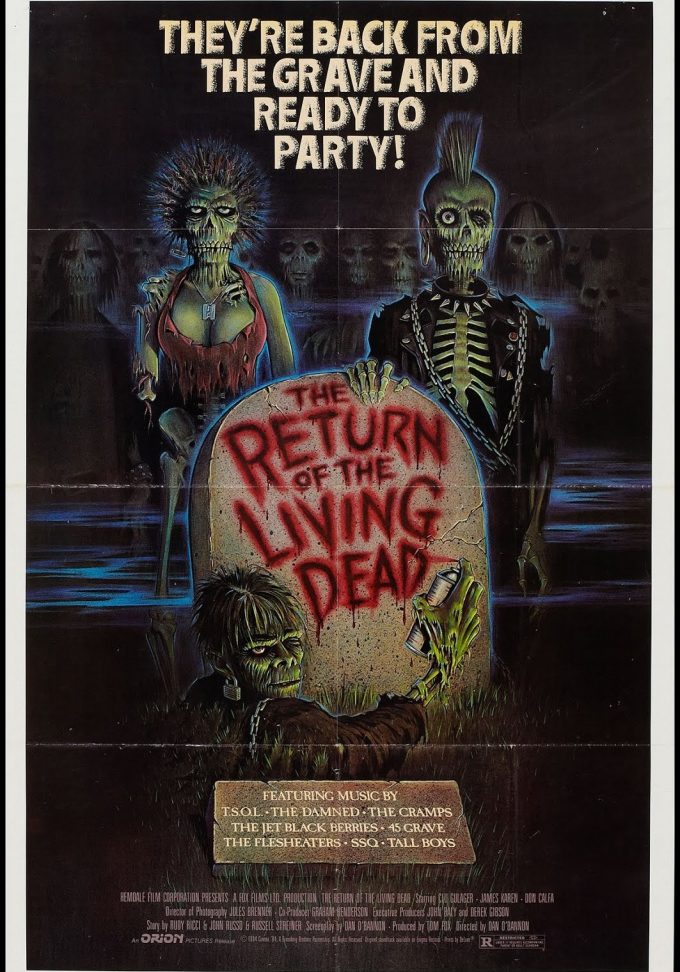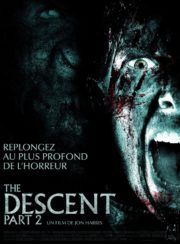An Undying Legacy: The Punk Rock of Horror
“Do you ever wonder about all the different ways of dying?” So begins a film that delves into the humourous morbidity inherent within us all. “The Return of the Living Dead,” directed by Dan O’Bannon in 1985, reanimates the zombie genre with a self-aware wink and a fittingly punk rock snarl. Far from your ordinary shamble in the graveyard, this film offers a fresh take on the then-iconic George A. Romero’s “Living Dead” series. Set against the backdrop of the 1980s, our silhouette is cast over a group of quirky punks and a couple of ill-fated warehouse employees who unwittingly release a toxic gas that brings the dead back to life—hungrier and more articulate than ever before.
A Resurrection of Laughs and Screams
“The Return of the Living Dead” effortlessly fuses the comical with the macabre, crafting a horror atmosphere that is as entrancing as it is ridiculous. O’Bannon’s approach to horror is less about the tension preceding a jump scare, and more about the tension between laughter and revulsion. He boldly rewrites the undead rules—these zombies run, strategize, and yes, they can talk, too. Cinematically, the film utilizes a myriad of techniques that engrain it in viewer’s memories. The lighting is ghoulishly vibrant, with scenes awash in toxic waste green and inferno reds, accentuating the film’s inherent unnaturalness. Camera angles are dynamic, framing the horrific hilarity with dutch tilts and claustrophobic close-ups that drive home the panic within the chaos.
Accompanying the impressive visuals is the film’s zealous use of sound. Whether it’s the punk rock soundtrack that mirrors the character’s rebellious spirit and the film’s wild energy, or the groans and calls of the undead, audio is key in pounding the beat of the movie into the audience’s pulse. Sound is played with innovatively, where the moans of the zombies are made more eerie with their enhanced cleverness—it’s one thing to fear a zombie, yet another to hear it call out for “More brains!” with a guttural intent.
Deathly Performances
The characters of “The Return of the Living Dead” feel as though they’ve been lifted from the pages of a particularly edgy 1980’s comic book, larger than life and twice as loud. There’s a scrappy believability to the performances; the characters may not be what you’d call multi-dimensional, but they’re real enough that you care when they’re in peril. The ensemble cast, including Clu Gulager, James Karen, and Don Calfa, deliver such genuine terror and frantic energy, they become the scream queens and kings of a forgotten punk era.
Flesh, Fear, and Philosophizing
This movie revels in its eclectic nature, merging slapstick humor with visceral gore, never missing a beat to shock and provoke. The undead encompass not just one category of horror; they are grotesque parodies of human beings, shambling around with graphic and disturbingly hilarious injuries. It strays from pure psychological terror, choosing instead to assault the senses directly with graphic sights and sounds.
Underneath the rot and rave, “The Return of the Living Dead” stirs deeper themes including the dehumanizing effects of consumerism and the paranoia of nuclear disaster. The zombie hordes are less a force of nature, and more an indictment of human error and hubris, a fitting narrative for the Cold War-tense era of its release. The result is a film that uses its horror trappings not just to startle, but to skewer and reflect.
The Final Reckoning: Still Kicking After Death?
“The Return of the Living Dead” is an odd creature; it’s a film that arguably redefined what a zombie could be and did so with such irreverent joy that it’s hard not to be charmed by its gruesome spectacle. It might not chill you to the bone, but it will certainly leave you on your toes, dancing to its punk-rock rhythm long after the credits roll.
Suitable for horror enthusiasts who appreciate a good shriek wrapped up in a cackle, this film might not sit comfortably with the casual viewer looking for traditional scares. Aficionados will recognize elements that later movies borrowed, while novices might appreciate the less serious, more outrageous approach to the zombie apocalypse genre.
In a sea of undead narratives, “The Return of the Living Dead” stands out like a ghoul in a biker jacket; it’s loud, brash, and unashamedly fun. Compared to other horror films of its time or even contemporary works, it dances merrily to the beat of its own disembodied heart. As with any content of this nature, viewer discretion is advised due to its graphical gore and dark humor.
All things considered, “The Return of the Living Dead” is an essential cult classic, offering a unique voice that echoes through the crypts of horror history. It’s a full-throated, brain-chomping hoot, and a must-watch for those who like their horror films with a side of anarchic wit.




